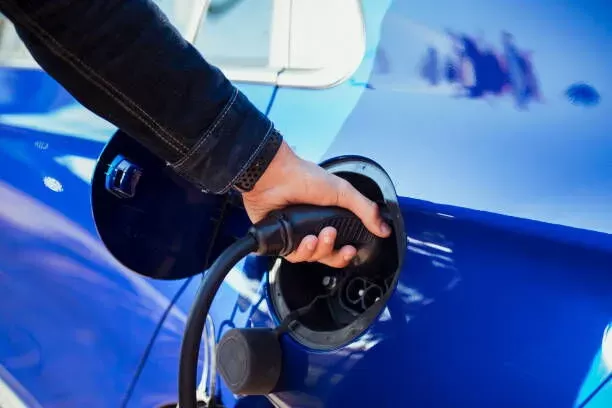Notifications

8 minutes, 10 seconds
-9 Views 0 Comments 0 Likes 0 Reviews

As a professional EV chargers manufacturer in China, Topper Company provides dependable electric vehicle charging station equipment and comprehensive charging solutions.
Electric vehicles (EVs) have gained massive popularity for their environmental benefits, lower running costs, and growing variety. But one question continues to top the list for both new and experienced EV drivers: How long does it take to charge an EV?
The truth is, there’s no one-size-fits-all answer. While EVs may plug in similarly, the charging time varies greatly, ranging from under 30 minutes to over 12 hours. Several factors come into play—battery capacity, onboard charger specs, charging station power, battery temperature, and even the time of day.
Here’s a snapshot of typical charging times:
Level 1 (120V AC): 20–40 hours for a full charge
Level 2 (240V AC): 4–10 hours
DC Fast Charging: 20–60 minutes to reach ~80% capacity
If you're aiming to spend less time plugged in and more time driving, there are practical ways to charge smarter and faster. Let’s dive into ten proven strategies to speed up your EV charging.
Still using a Level 1 charger from a standard outlet? You’re likely getting just 3–5 miles of range per hour—fine for occasional use, but frustrating for daily drivers.
Why upgrade to Level 2?
Level 2 chargers use a 240V outlet and can deliver 12–60 miles of range per hour, depending on your EV and charger specs. Ideal for overnight charging, this setup is a game-changer for anyone with regular commuting needs.
While a professional electrician is typically needed for installation, many utility providers offer rebates or incentives to reduce the upfront cost.
Lithium-ion batteries are sensitive to temperature. Both heat and cold can slow charging speeds significantly.
Best practices:
In hot climates, park in shaded or garage spaces to avoid overheating.
In cold weather, precondition your EV to warm the battery before fast charging.
Some models (like Tesla or Hyundai EVs) come with active thermal management systems that help keep the battery at optimal temperatures automatically.
Simple habits can ensure your EV charges efficiently:
Keep the charging port clean—dust and debris can affect the connection.
Avoid interrupting charging sessions, especially during fast charging.
Inspect your cables regularly for wear to maintain safe and effective energy transfer.
Maintaining your charging equipment helps it perform better—and last longer.
Charging during off-peak hours reduces strain on the grid and may improve charging performance.
Why it matters:
More stable electricity supply can translate to faster charging.
Time-of-use (TOU) rates often make off-peak electricity cheaper—typically late at night or early morning.
Cleaner energy mix during off-peak hours in many regions means a lower carbon footprint.
Use your EV’s timer or a smart charger app to automate this.
Cold batteries resist fast charging. Before plugging into a DC fast charger, warm the battery to improve efficiency.
How:
Use your EV’s preconditioning feature via app or dashboard.
Start with a brief Level 1 or Level 2 charge to raise battery temperature gently.
Some EVs handle this automatically; others may benefit greatly from a manual warm-up step.
Your EV’s State of Charge (SoC)—or how full the battery is—directly influences how fast it can charge.
Low SoC (0–60%) = fastest charging
High SoC (80–100%) = slower charging due to battery protection
Most fast chargers reduce power dramatically after 80%. For daily driving, charging to 80% is often more time- and battery-friendly than topping off to 100%.
Some EVs can precondition the battery automatically when navigating to a charging station.
How it works:
As you approach a fast charger, your EV adjusts the battery temperature to the ideal range—so it’s ready to accept power as soon as you arrive.
Brands like Tesla, Lucid, Rivian, and Hyundai offer this in select models with built-in route planning.
Not all public charging stations are equal—some offer better power, speed, and reliability.
Tips:
Use apps like PlugShare, ChargePoint, or Electrify America to locate high-powered chargers (e.g., 150kW or 350kW).
Filter by plug type and power level based on your EV’s capabilities.
Check user reviews and uptime stats to avoid broken or slow stations.
Choosing a fast, reliable charger can make a huge difference on road trips or in daily use.
EV software updates often improve not just performance, but also charging efficiency and battery behavior.
Benefits of keeping your software current:
Higher charging speeds
Smarter charging curves
Improved thermal management
Updates are typically delivered over-the-air, but check your manufacturer’s app or service center for the latest version.
Instead of waiting for your battery to run low and then fully charging it, consider topping off more frequently between 20% and 80% SoC.
Strategic charging tips:
For daily driving, stop at 80%.
On long trips, use fast chargers between 10%–80% to maximize speed.
Only charge to 100% when necessary, such as before a long highway drive.
Charging smart helps extend battery life and reduce total charging time.
Getting faster EV charging isn’t just about the hardware—it’s about knowledge, habits, and tools. Understanding how your EV charges, managing battery temperature, charging at the right time, and using intelligent networks or apps can drastically improve your experience.
As EV technology evolves, even faster charging options are on the horizon. But for now, these practical steps can help you charge faster, drive farther, and enjoy your EV more efficiently—wherever the road takes you.Know more about Google SEO Directory
China EV Chargers EV Charger Manufacturer EV Charging Solutions

